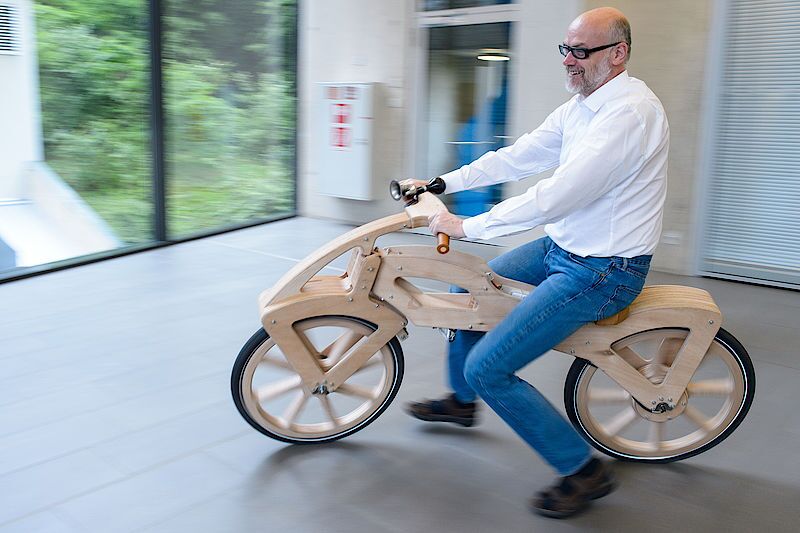Back before the bicycle was invented, people rode something known as the draisine or "dandy horse." Invented by Karl von Drais, it was like an adult-sized version of the balance bikes still used by toddlers today – instead of pedalling it, riders simply straddled it and strode along with their legs on either side. Now, a team of computer scientists from Germany's Saarland University has created a gloriously retro electric-assist draisine.
June 12, 1817 was an important date in draisine history, as that was the day that von Drais took his invention on its first relatively long test ride. Given that it's now 200 years later, the new electric one-off is called the Draisine 200.0.
Like the original dandy horses, it's made almost completely out of wood. Unlike them, however, it features a 200-watt rear hub motor, a frame-mounted battery, an accelerometer, a Raspberry Pi microcomputer, and an RPM-measuring magnetic sensor in the rear wheel.
The computer continuously monitors the accelerometer and wheel sensor, checking them about 150 times a second. In this way, it detects the increases in speed that occur with each of the rider's "steps." It instantaneously responds by activating the motor, having it add a proportional amount of electric assistance.

A top motor-assisted speed of 25 km/h (16 mph) is possible.
The project was led by Prof. Holger Hermanns, who previously developed a wireless braking system for bicycles. He created the Draisine 200.0 in order to explore new types of electric-assist systems, which aren't activated solely by pedal revolutions.
It should be noted that there is already a commercially-available dandy horse with an electric motor – the Wheela – although its motor works in throttle mode only, and not in response to the rider's steps. And if electric penny farthings are more your thing … well, BASF built one of those.
Source: Saarland University






